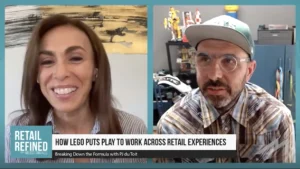Nordstrom’s Retail Hubs Show Brick-And-Mortar Experience Has Much to Offer, Even Without Any Inventory
That the retail space has been fighting for survival in the past decade is no surprise. The closing of the iconic Toys R Us earlier this year surprised many, but not everyone in the industry. There are forward-thinking retailers experimenting their way toward not only surviving this dark age of brick-and-mortar retail but even thriving.
One of the major trends shaking up the industry right now is a shift away from treating retail space as a beautified warehouse. With the onset of e-commerce and omnichannel engagement, having a large amount of inventory on display can lead to bloat and wasted opportunity. Few companies have been as consistently experimental as Nordstrom, but their recent development is earning serious respect.
“Nordstrom Local” stores have popped up in multiple Los Angeles locations. These “service hubs” feature, rather than focus on, inventory. Service is the star and Nordstrom plans for it to reshape the retail experience. A lush interior keeps customers comfortable while they take advantage of an in-house seamstress, consult with a stylist, or just stop out back to conveniently grab their online order. So far, Nordstrom has been ranked the nation’s favorite premium retailer for the sixth year in a row.[1]
Nordstrom executives insist that their success is in their willingness to try, discard poor results, and keep trying. They are not alone. IKEA saw an opportunity to shore up its biggest customer complaint: home assembly. The acquisition of site/app TaskRabbit to get safe, easy help is a prime example of how this industry is bouncing back by staying nimble.[2] Amazon is impossible to ignore in this discussion, being the driving force behind much of this retail disruption. The giant’s constant evolution and experimentation raised eyebrows for years, peaking with last year’s purchase of Whole Foods. As the old model crumbles, Amazon’s progressive and interest in experimentation is finally creeping into the larger retail industry.
Retail—even brick and mortar retail—is far from dead. The rules of the game have just changed. In the next few years, pay close attention to the brands that hustle, experiment, and let failure be their guide.[3] A box of product on the corner has been defunct for years, and though it’s finally starting to show, it’s far from a death sentence.
[1] https://www.fastcompany.com/90180401/exclusive-nordstom-expands-its-innovative-inventory-free-service-hubs
[2] https://www.forbes.com/sites/tompopomaronis/2018/03/28/these-7-brands-are-adapting-in-a-highly-chaotic-retail-environment-and-winning/#7482fbcc518a
[3] https://www.mytotalretail.com/article/how-3-leading-retailers-adapting-changing-consumer-behaviors/








